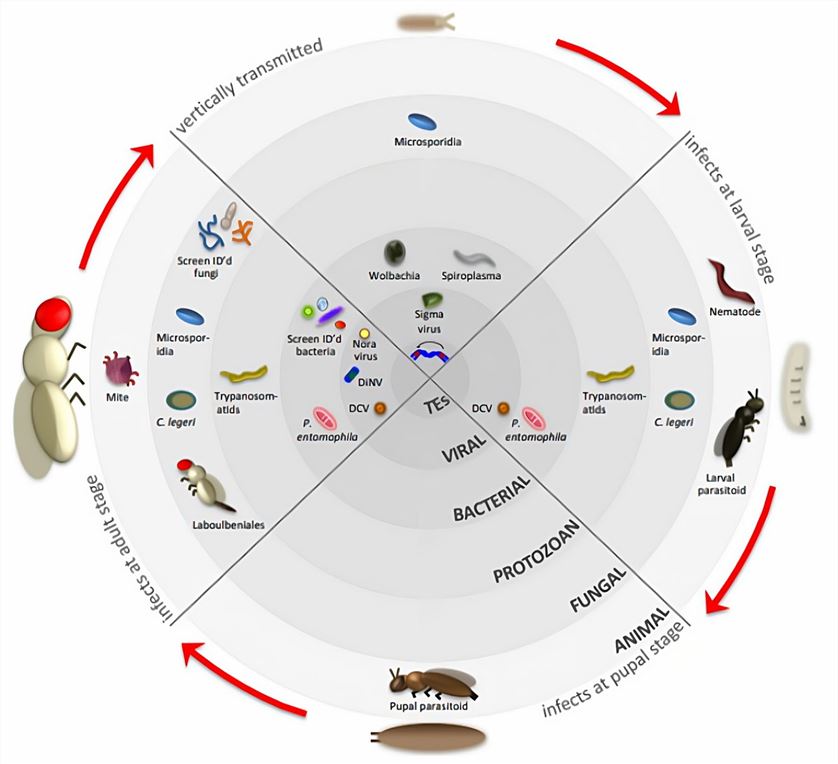Overview of Parasites
It is well known that these creatures are a critical part of eukaryotic organisms. Unlike bacteria or viruses, parasites share many features with human cells, including a well-defined nucleus. A parasite can consist of one cell, as in Giardia, or many cells, as in parasitic worms. In general, they are larger than bacteria, but some environmentally resistant forms are almost as small as bacteria. Notably, the characteristics of the parasites vary widely. Some are invisible to the human eye while others can be tens of centimeters long. Although they are not diseases, they are vectors of diverse diseases. They may indirectly injure the host by transmitting pathogens. This may adversely affect the behavior and metabolism of the host. More importantly, they are found in various body parts such as blood, digestive system, liver, brain and even eyes.
Structural Features
In addition, animal parasites are widely studied, such creatures are highly specialized and reproduce faster than their hosts, such as tapeworms, trematodes, and plasmodium. Many of them have specialized structures, including hooks, claws, or suckers, to stick to their hosts. Parasites have suckers or piercing-sucking mouthparts to feed. Both adults and juveniles can be parasitic. Some of them are dependent on host organisms for replication while others can reproduce freely in the environment. In some cases, larvae are parasites while adults are not.
Main Categories
There are many types of parasites, some of these live on the surface of the host while others live inside the host. Parasites related to the disease in humans are divided into several groups: protozoa, helminths as well as ectoparasites.
 Fig.1 P. falciparum lifecycle.1
Fig.1 P. falciparum lifecycle.1
- Protozoa
Such creatures are transmitted through insect bites or human-to-human contact, in addition, contaminated water or food are also important vectors of transmission. Common Protozoa include Plasmodium, which causes malarial infection, Giardia, and the ingestible Cryptosporidium.
- Helminths
Helminths are a class of large, multicellular organisms that are usually visible without a microscope in the adult stage. They are usually found in the human digestive tract. These parasites are unable to multiply in humans or divide and end up passing in human feces. These include the roundworm and hookworm parasites.
- Ectoparasites
These parasites are small organisms that live outside the body. These include fleas, ticks, and lice.
Antibodies (Abs) at Creative Biolabs
Various anti-parasite Ab products are available at Creative Biolabs, but these products are intended for research use only. With an advanced platform and a professional team, we focus on providing a wide range of unconjugated Abs against the parasite. In addition, we can customize different conjugations according to customer requirements, such as peroxidase (HRP), biotin, and fluorescent dyes.
If you are interested in our anti-parasite Abs, please feel free to contact us.
You can learn more about our products through the following links:
Reference
- Molina-Franky, Jessica, et al. "The cellular and molecular interaction between erythrocytes and Plasmodium falciparum merozoites." Frontiers in cellular and infection microbiology 12 (2022): 816574. Distributed under Open Access license CC By 4.0, without modification.
-
-
AibGenesis™ Anti-A. stephensi Anopheline Monoclonal Antibody (Mouse mAb, 7G08) (CAT#: MAS-0124-YJ8)
- Host: Mouse
- Reactivity: A. stephensi
- Applications: Inhib
- Conjugations: Conjugation could be customized
-
-
-
AibGenesis™ Anti-Cockroach Bla g 2 Monoclonal Antibody (Chimeric human mAb) (CAT#: MAS-0524-YJ77)
- Host: Human
- Reactivity: Cockroach
- Applications: ELISA
- Conjugations: Conjugation could be customized
-
-
-
AibGenesis™ Anti-C. parvum CSL Monoclonal Antibody (Mouse mAb) (CAT#: MAS-0524-YJ69)
- Host: Mouse
- Reactivity: C. parvum
- Applications: WB; IF; FuncS
- Conjugations: Conjugation could be customized
-
-
-
AibGenesis™ Anti-Bla g 2 Monoclonal Antibody (Mouse mAb) (CAT#: MAS-0124-YJ23)
- Host: Mouse
- Reactivity: B. germanica
- Applications: ELISA; Inhib; FuncS
- Conjugations: Conjugation could be customized
-
-
-
AibGenesis™ Anti-Anopheles AAPP Monoclonal Antibody (Mouse mAb, 7G61) (CAT#: MAS-0124-YJ11)
- Host: Mouse
- Reactivity: Anopheles
- Applications: ELISA; Inhib
- Conjugations: Conjugation could be customized
-
For Research Use Only. Do NOT use in humans or animals.